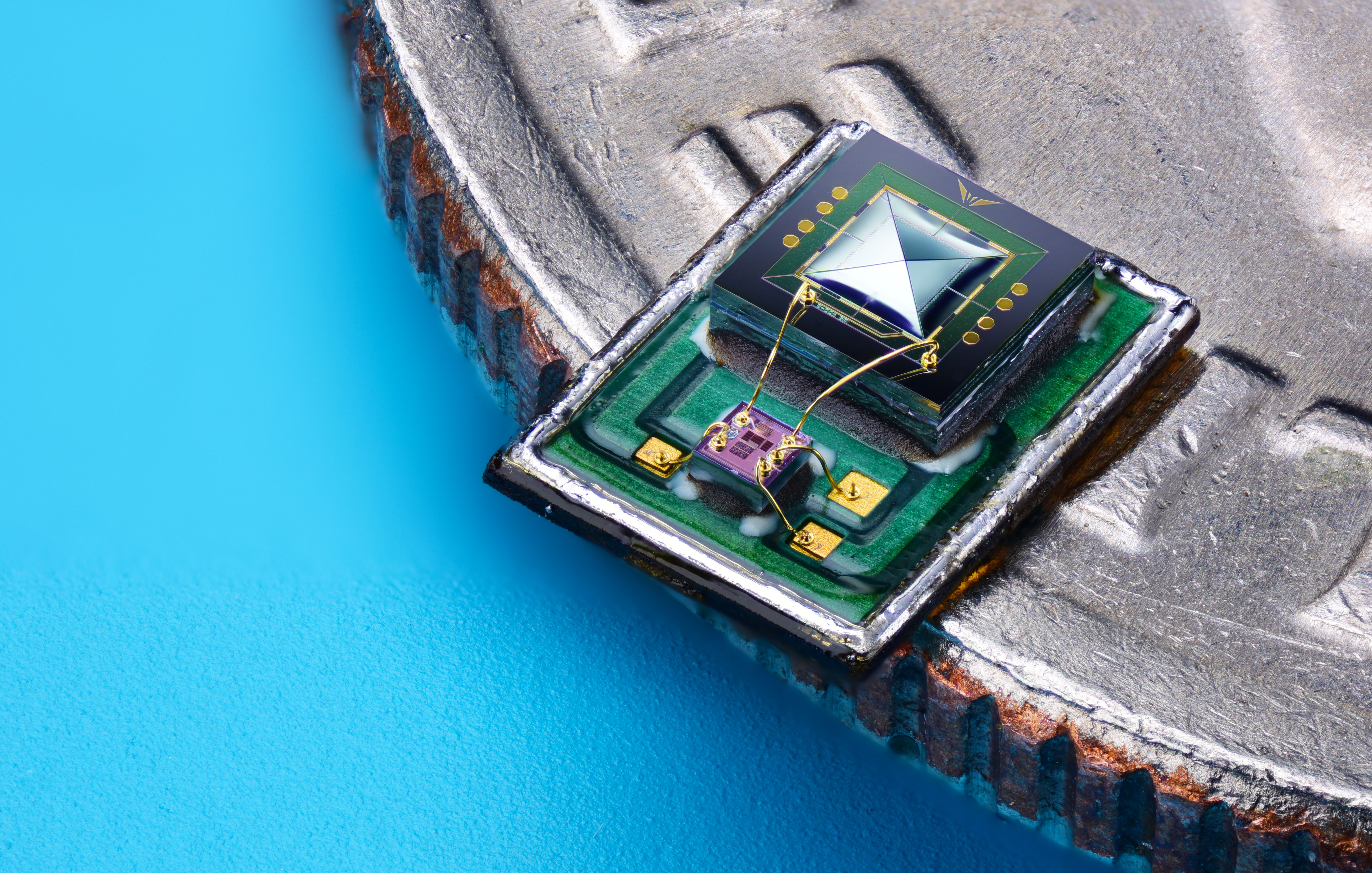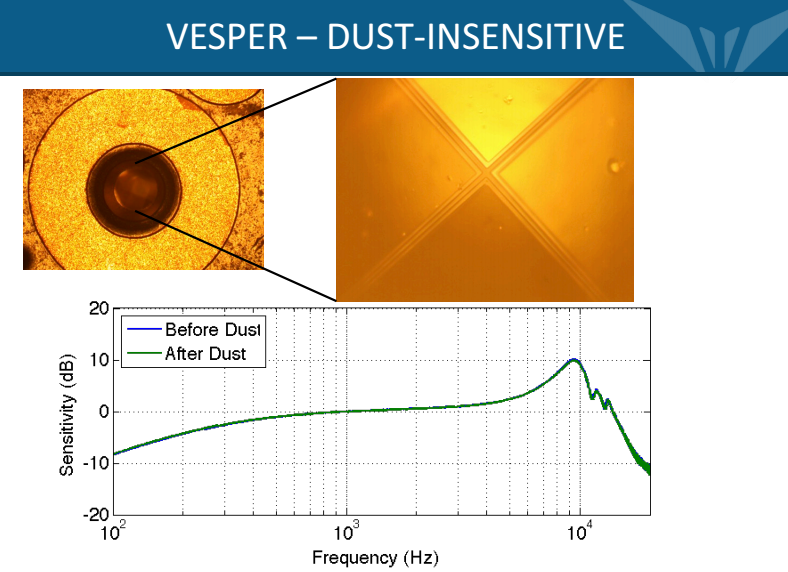Vesper VM101: First Piezoelectric MEMS Microphone That's Also Waterproof And Dust Proof
Vesper, the leader in advanced acoustic-sensing technology, launched the VM101, a piezoelectric MEMS (microelectromechanical system) microphone that achieves typical signal-to-noise ratio (SNR) of 68 dB.
According to Vesper, this is currently the highest acoustic performance of any commercially available MEMS microphone and almost twice as high as the 65 dB performance of the closest competitor. VM101 is the first piezoelectric MEMS microphone, which means it converts sound pressure into an electric charge.
The VM101 solves many current device problems, including Internet of Things (IoT) devices and smartphones, especially as voice becomes a critical feature of many "smart" devices around us. We're just now starting to use voice to control smartphones, TVs, set top boxes, cars and smart appliances, and this trend will only grow in the future.
However, all of those voice enabled devices need both good software that can identify what you're saying as well as a good capability to capture that sound as clearly as possible. This becomes even more important if you're not in a completely silent room or speaking right into the device itself.
Next-generation devices and microphones will need to capture your voice even if you are farther away (such as in the case of a set top box or smart TV) and even if there are other sounds in the background. If there are multiple people speaking at the same time, it would also be useful if the device knew how to identify only your voice. This could become more important as these technologies move to recognizing more conversational, rather than fixed, commands.
"Voice is expected to supplant touch as the dominant user interface in consumer products. This makes higher-performance MEMS microphones increasingly critical because they are right at the beginning of the audio signal chain," said Matt Crowley, CEO at Vesper.
Vesper's VM101 solves a large part of this issue by being an ultra-high SNR microphone as well as by supporting a feature called "audio zoom," which allows devices to focus on someone's voice, not unlike a camera would focus on a person's face. By forming arrays of up to four microphones, OEMs could also double the distance at which sound can be captured.
Get Tom's Hardware's best news and in-depth reviews, straight to your inbox.
Unlike capacitive MEMS microphones, which are made up of multiple membrane layers that trap air between them, the VM101 is made up of a single membrane that can create the strongest signal possible.
The VM101's simpler design is also what makes it highly reliable and resistant to water, dust or shock damage. According to Vesper, the second biggest reason for smartphone returns, after cracked screens, is a microphone that stopped working or functioning well. This usually happens due to water or dust damage, so a microphone such as the VM101 should be highly appealing to smartphone manufacturers that may want fewer costly device returns.
"You can actually drop VM101 into Boston Harbor or bury it in sand at the beach, and it will still work properly," said Crowley. "With microphone failure, the second most common reason for smartphone returns after cracked screens, reliability is vital. Having such a robust microphone potentially alleviates major headaches (and returns) for manufacturers."
Compared to capacitive MEMS microphones, the Vesper VM101 manages to maintain its performance even after water damage or being covered by dust particles.
The VM101 has a 10,000x faster startup than capacitive microphones, which means it's ideal for "always-on voice," and it consumes less power, too (150 μA typical power consumption).
In a few years, Vesper believes that its microphones, which will be used in smartphones, wearables and IoT devices, will have better audio quality and performance than much more expensive professional microphones that exist today. The piezoelectric MEMS microphone technology is still in its early days and could be further improved by 10 or 20 times in the future, according to the company.
Vesper has already started sampling the VM101 to interested customers and will begin mass production in Q4 2015.
Follow us @tomshardware, on Facebook and on Google+.
Lucian Armasu is a Contributing Writer for Tom's Hardware US. He covers software news and the issues surrounding privacy and security.
-
f-14 Reply"We're just now starting to use voice to control smartphones"
WRONG, ALL MY PHONES WERE VOICE CONTROLLED SINCE 1998/2001, NONE OF THEM WERE iTARD'ISH-ISMs
motorola ftw! first before iCr@ even had a phone and was just making cheap chincy mp3 players





